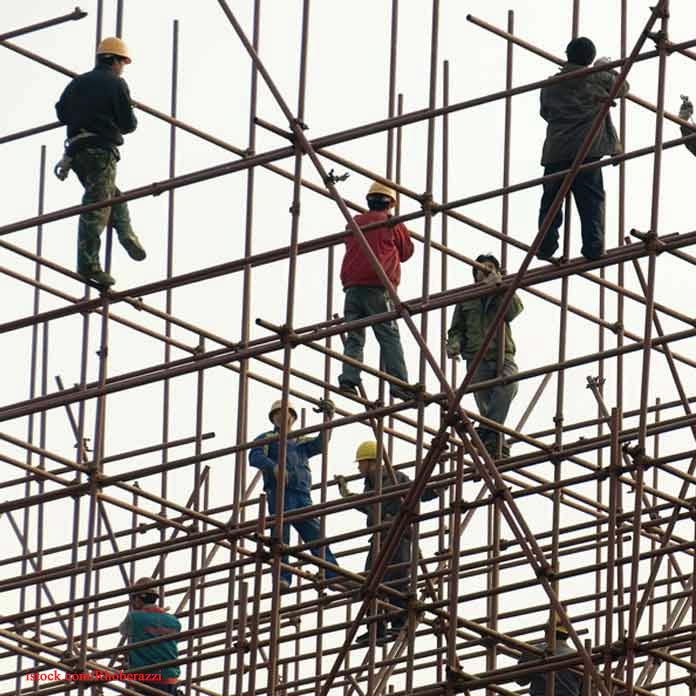Worksite falls are the leading cause of worker death in the construction industry.
OSHA statistics reveal that 1 in 5 worker deaths in 2014 occurred in the construction industry. The “Fatal Four” causes of death – all preventable – fall (349 out of 874 total construction deaths in 2014), electrocutions (74), struck by an object (73), and caught-in/between (12). Of the 10 most frequently cited OSHA standards violated in FY 2015, the fall protection in construction standard (29 CFR 1926.501) leads the list.
In just one sample month, there were 32 construction deaths from falls off of the following (more than one incident indicated in parenthesis):
- roof (9)
- tree
- scaffold (4)
- truck lift
- forklift
- scissor lift
- ladder (9)
- skylight
- from third-story of building
- elevated bucket
- bridge (2, one during demolition)
- trailer.
There was also a fatal fall into an aquifer, where the worker was drowned, and a fatal slip and fall in a parking lot.
OSHA Designates May 2-6, 2016, as its Third Annual National Safety Stand-Down
A press release issued today by the U.S. Department of Labor has announced the joint sponsorship by the Occupational Safety and Health Administration (OSHA), the National Institute for Occupational Safety and Health, and the Center for Construction Research and Training of its third annual National Safety Stand-Down.
This initiative was begun in 2014 as a nationwide attempt to educate employers and workers in the construction industry of the importance of preventing falls.
According to Dr. David Michael, Assistant Secretary of Labor for Occupational Safety and Health,
“While we regularly work with employers, industry groups and worker organizations on preventing falls and saving lives, the National Safety Stand-Down encourages all employers – from small businesses to large companies operating at many job sites – to be part of our effort to ensure every worker makes it to the end of their shift safely.”1
In 2014 and 2015, over 4 million workers participated in the week-long National Safety Stand-Down events, engaging in activities including toolbox talks, safety training sessions, and discussions about fall hazards and prevention. The Stand-Down is part of OSHA’s larger Fall Prevention Campaign, launched in 2012 in conjunction with the NIOSH National Occupational Research Agenda program.
Legal Recourse for Construction Falls
Contact our law firm about a lawsuit for a fall at a construction site.
When a worker dies or is seriously injured at a worksite, the amount of compensation available to the worker and the family is limited under workers’ compensation. This is because workers’ comp does not payout amounts for pain and suffering and similar damages. To get this kind of compensation, it is necessary to find a third party (a company that is not the employer) who is legally responsible. For example, if the fall was from a ladder, and the ladder was defective, the manufacturer of the ladder can be sued.
Our law firm is consistently listed in U.S. News & World Report’s The Best Law Firms in America. Our personal injury and wrongful death lawyers have won over 50 $million+ settlements and verdicts.
Our construction site accident lawyers represent clients throughout the United States: Alabama AL, Arizona AZ, Los Angeles, California CA, Colorado CO, Connecticut CT, Delaware DE, Florida FL, Georgia GA, Iowa IA, Illinois IL, Indiana IN, Kansas KS, Louisiana LA, Massachusetts MA, Maryland MD, Maine ME, Michigan MI, Minnesota MN, North Carolina NC, North Dakota ND, Nebraska NE, New Hampshire NH, New Jersey NJ, New York NY, Ohio OH, Oklahoma OK, Oregon OR, Pennsylvania PA, Rhode Island RI, South Carolina SC, South Dakota SD, Tennessee TN, Texas TX, Utah UT, Virginia VA, Washington WA, West Virginia WV, Wyoming WY.
